In this article, we will delve into the advantages, applications, intricate processes, types of materials, quality control, post-processing, challenges, and the significance of custom investment casting parts.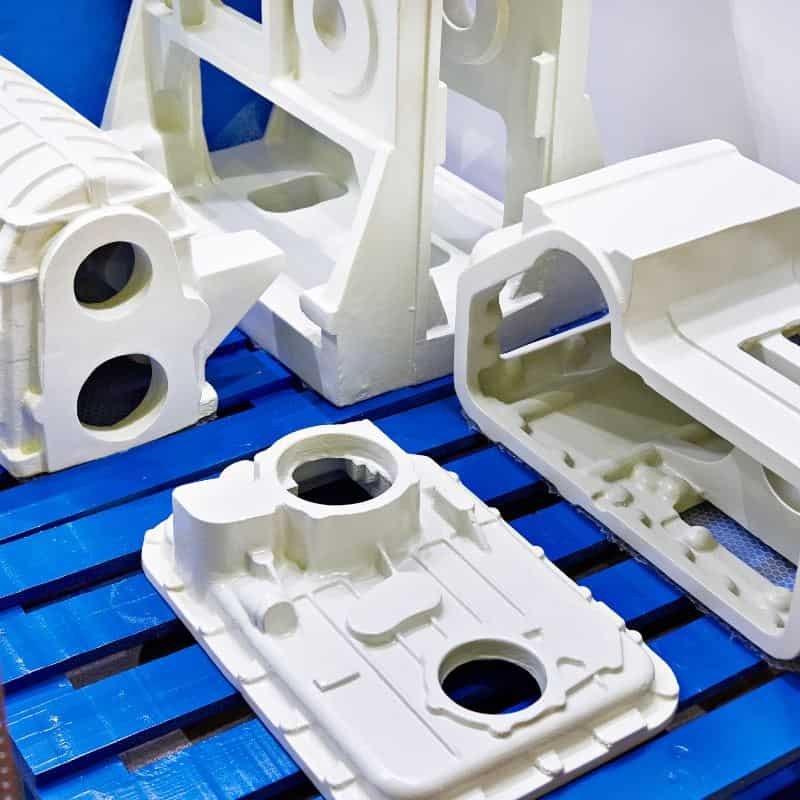
Table of Contents
Why Choose Custom Investment Casting Parts
Customizing investment casting parts is crucial for meeting specific design requirements, selecting optimal materials, and enhancing cost efficiency. The process allows for the creation of parts with intricate geometries, optimizing performance for various applications. Customization also facilitates prototype development, enabling refinement based on testing and feedback. Moreover, it reduces assembly requirements by integrating multiple components into a single, complex part. Overall, customization in investment casting is essential for tailoring parts to unique specifications, improving efficiency, and achieving optimal performance in diverse environments.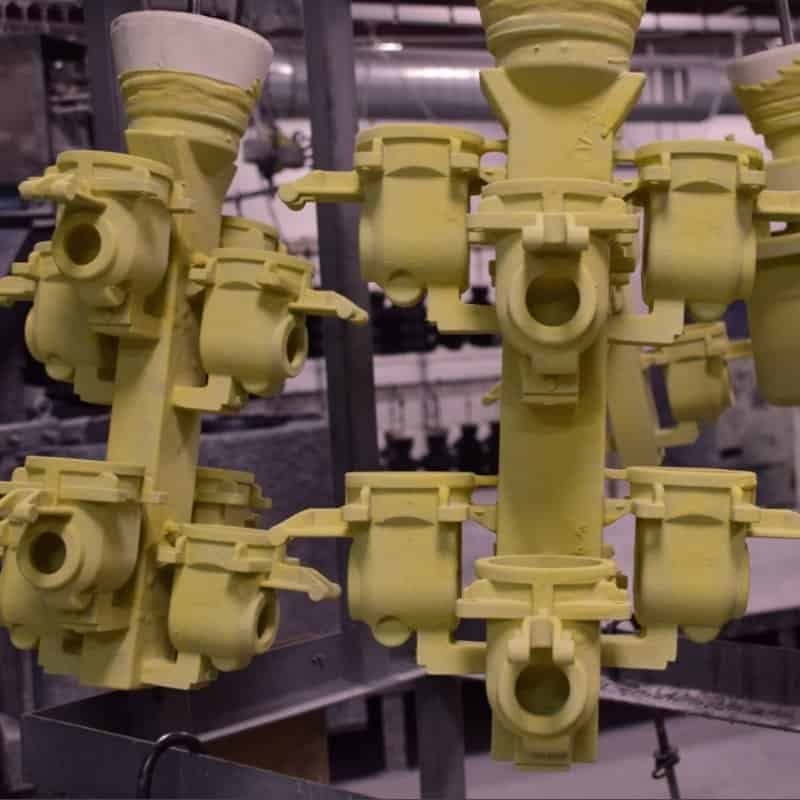
Advantages of Investment Casting
- Complex Geometries: Enables production of intricate shapes difficult for other methods.
- High Precision: Provides highly accurate parts with minimal need for additional machining.
- Smooth Surface Finish: Produces parts with a smooth surface, reducing post-processing requirements.
- Versatile Materials: Supports a wide range of materials, both ferrous and non-ferrous.
- Reduced Material Waste: Minimizes material waste, enhancing cost efficiency and sustainability.
- Cost-Effective for Small to Medium Runs: Becomes cost-effective for smaller production runs due to reduced machining and assembly needs.
- Detail Reproduction: Excels in reproducing fine details and intricate features on castings.
- Wide Size Range: Applicable to both small, delicate components and large, heavy castings.
- Prototype Development: Well-suited for prototyping, allowing efficient testing and validation of designs.
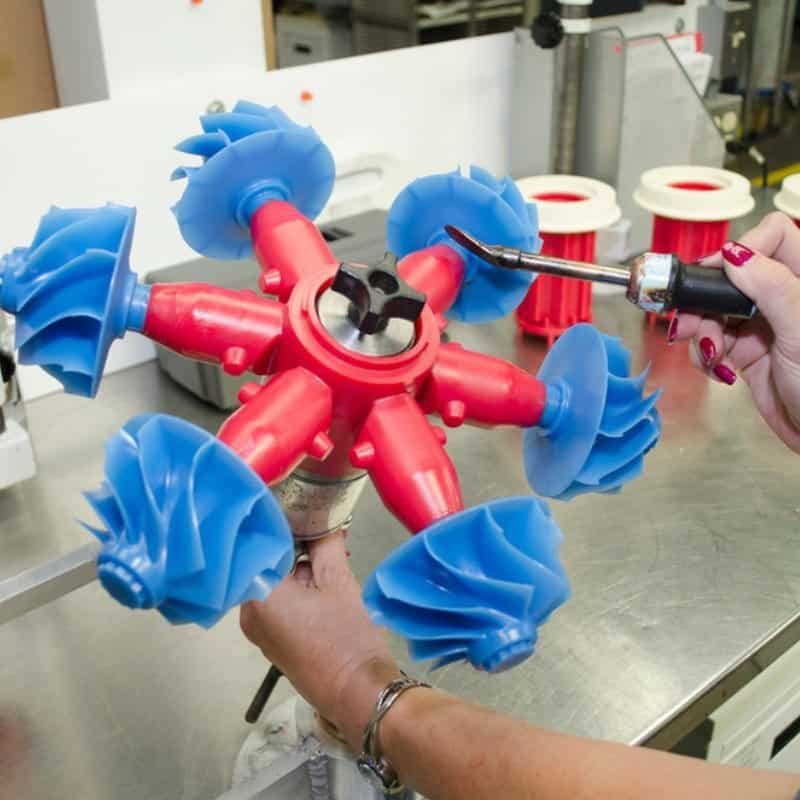
Applications Across Industries
Investment casting is extensively employed across industries due to its versatility and precision in crafting intricate components. In aerospace, it plays a key role in creating lightweight and intricately designed turbine blades and engine parts. Within the automotive sector, it contributes to weight reduction and improved fuel efficiency for engine and transmission components. Precision in manufacturing instruments and implants brings benefits to the medical field, and the energy sector utilizes the process for crafting power generation components. From defense and industrial equipment to jewelry and consumer goods, investment casting stands as a vital manufacturing solution, delivering high-quality and intricately designed parts for a wide array of applications throughout the manufacturing spectrum.
The Intricate Process of Investment Casting
Understanding the steps involved in Custom Investment Casting provides insight into the craftsmanship behind this technique.
Wax Pattern Creation
The process begins with the creation of a wax pattern, capturing the fine details of the final component.
Shell Building
The wax pattern is then coated with a ceramic shell, creating a mold that will withstand the rigors of the casting process.
Melting and Pouring
The mold is heated to remove the wax, leaving behind a cavity ready for the molten metal. The metal is then poured into the mold.
Cooling and Removal
After the metal solidifies, the shell is broken, revealing the final cast component. Precision and accuracy are paramount at every stage.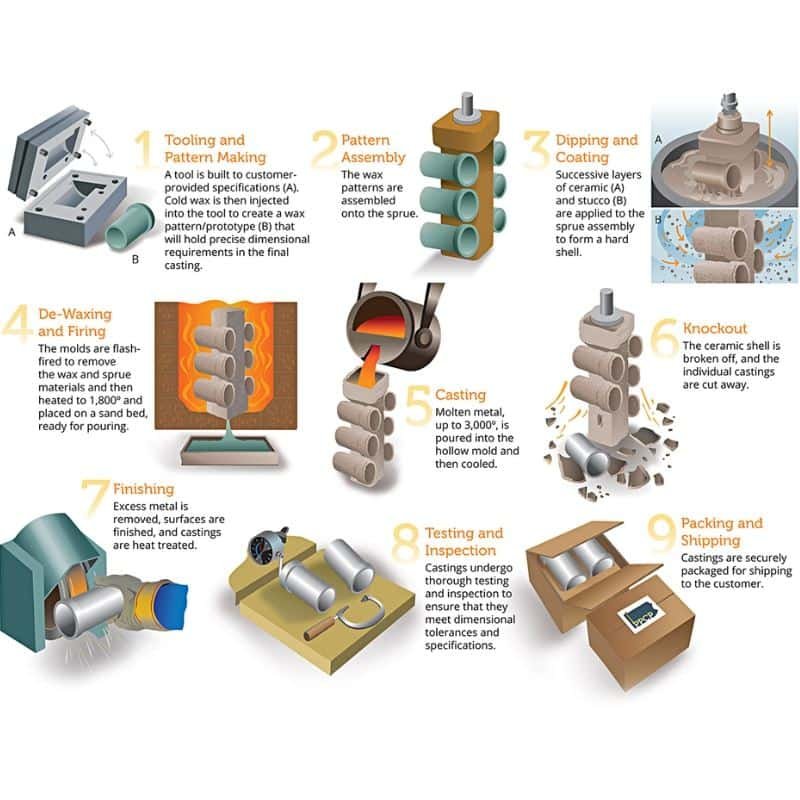
Types of Materials for Investment Casting
In the intricate realm of investment casting, various materials cater to diverse industry needs.
Steel alloys: valued for strength and versatility, find applications in aerospace and automotive sectors.
Lightweight aluminum alloys: crucial in weight-sensitive industries like aerospace.
Copper alloys: Less common but prized for conductivity, grace in electrical components, and artistic creations.
Superalloys: resilient in extreme conditions, serve aerospace and chemical processing.
Titanium alloys: known for their strength-to-weight ratio, contribute to aerospace, medical, and chemical applications.
Each material, from the robustness of steel to the uniqueness of titanium, enhances the precision and adaptability of investment casting, offering tailored solutions across industries.
Quality Control in Investment Casting
- Inspection and Testing: Rigorous scrutiny is applied to cast components for defects and imperfections, including checks for dimensional accuracy, surface finish, and structural integrity.
- Adherence to Standards: Meeting industry standards is paramount throughout the casting process, ensuring that the final products comply with established benchmarks.
- Advanced Technologies: Utilization of advanced technologies, such as non-destructive testing methods like X-rays and ultrasonic testing, enhances the precision and reliability of the quality control process.
- Professional Expertise: Skilled professionals oversee every stage of the investment casting process, demonstrating a commitment to attention to detail and ensuring that the final components meet or exceed expectations.
This comprehensive approach to quality control underscores the dedication of the investment casting industry to delivering components of the highest caliber.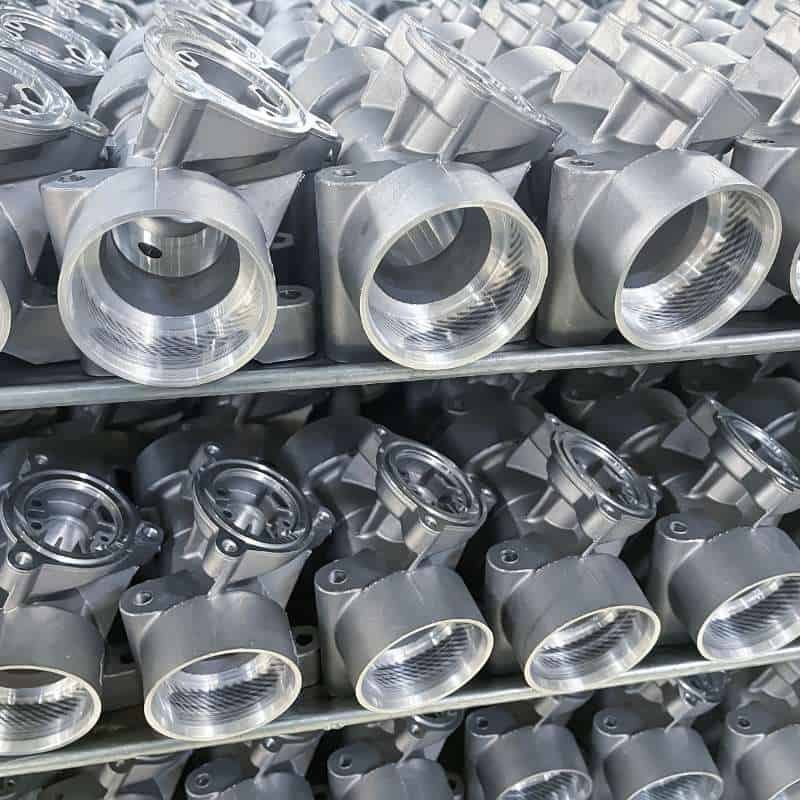
Post Process of Investment Casting Parts
The post-processing phase in investment casting is crucial for refining and enhancing the final components. After the casting process is complete, the following steps are commonly undertaken to achieve the desired specifications and characteristics:
- Removal of Ceramic Shell: Extracting cast components from the ceramic shell through mechanical or thermal methods.
- Cutting and Grinding: Removing excess material to achieve final shape and dimensions.
- Surface Finishing: Polishing or shot blasting for desired texture and smoothness.
- Heat Treatment: Optimizing mechanical properties like hardness and strength.
- Machining (if needed): Additional processes for precise tolerances or intricate features.
- Inspection and Quality Assurance: Thorough checks to meet required standards.
- Assembly (if needed): Joining components through welding or fastening.
- Final Coating or Plating: Enhancing durability or achieving specific surface properties.

Challenges in Investment Casting
Investment casting faces challenges that demand careful consideration. Material selection requires balancing factors like melting point and fluidity, while intricate designs pose complexities in mold design and wax pattern creation. Initial setup costs and the balance between automation and craftsmanship challenge the cost-effectiveness and efficiency of the process. Consistent surface finishes and precise dimensional accuracy are ongoing concerns, necessitating meticulous attention. Addressing environmental impact and managing production time for complex components add further layers to the challenges. Despite these hurdles, ongoing innovation and refinement in the investment casting process are essential for its success in diverse industrial applications.
Custom Investment Casting Parts
Acquiring custom investment casting parts from manufacturers involves a strategic and collaborative process. Here’s a step-by-step guide on how to navigate this bespoke manufacturing journey:
- Specify Your Requirements: Clearly outline your design, size, and material preferences for the parts.
- Research Manufacturers: Identify reputable manufacturers with expertise in custom investment casting.
- Initiate Contact: Reach out to manufacturers, discussing your project in detail for mutual understanding.
- Collaborate on Design: Work closely with the manufacturer to optimize the design for manufacturability.
- Material Selection: Choose materials with the manufacturer, considering application-specific requirements.
- Request Quotation: Obtain a comprehensive quotation covering design, tooling, casting, and post-processing.
- Prototype Development: Consider developing prototypes for validation before full-scale production.
- Establish Quality Protocols: Set clear quality assurance standards and discuss inspection methods.
- Authorize Production: Once satisfied, authorize the production of custom investment casting parts.
- Final Inspection and Delivery: Conduct a final inspection before the delivery of the finished parts to your location.

Conclusion
In the realm of manufacturing, where precision and customization are non-negotiable, custom investment casting emerges as a frontrunner. Its ability to transform intricate designs into tangible, high-quality components makes it indispensable across various industries. As technology advances, we can expect even greater precision and efficiency in the custom investment casting process, further expanding its applications and impact.


